Indian-Origin Scientist is Simplifying Science With a Pinch of Art & Humour!
I converse with Dr VInita Bharat, the artist beind Fuzzy Synapses - A platform of fun comics that propels the reaches of science.

Reading the comic strips and illustrations in the newspaper shows us the ingenuity of the human mind. Within a 4×4 panel, a joke is not only set-up and executed with a punchline, but there is an inherent moral that the artist portrays through humour.
A single illustration has the potential to comment on the current news and the public, with a dash of humour. Illustrations have become a medium of communication through which we deliver information about certain topics.
And these topics are never limited. Ask Dr Vinita Bharat, the woman behind Fuzzy Synapse who uses the art form to spread the knowledge of science.
A neuroscientist by training, Vinita is currently pursuing her postdoctoral studies at Stanford University. It was when she was doing her PhD at the International Max Planck Research School, in Germany, that she came up with the idea of Fuzzy Synapse.
Now first, a little insight into what Fuzzy Synapse is. It is a platform to simplify complex scientific ideas and concepts in fun and easy ways by using illustrations and comics.

Topics like Einstein’s general relativity or neurology are presented through hilarious comics that incite curiosity. So concepts like neurophysics even left me intrigued what the subject was about.
So, I conversed with Vinita Bharat to know how Fuzzy Synapse originated. She answers, “While doing my PhD in Germany, whenever I went back home during the vacations, I used to contact various schools in India where I could talk to school kids about what scientists do inside the lab. I used to call those sessions ‘A chitchat with scientist’.”
Being a fan of doodling and expressing her ideas not just in words but also through drawing, Vinita came up with an innovative way to engage with the students.
“For these sessions with students, I used to draw and make fun animated videos for science education where the kids watched it with smiles on their face and with interest,” says Vinita. And from there, she found a unique curiosity in children.

“And then in April 2017, a few of my friends encouraged me to put my work online so that other people can relate to and connect with the idea. And thus the idea of conveying science and explaining scientific topics in a simple and fun way through my platform FUZZY SYNAPSE started,” recalls Vinita.
The name ‘Fuzzy Synapses’ refers to the fuzzy connection between science and society. And ‘synapse’, in biological terms, means two neurons connecting to each other.
With people’s general belief that science and art are two opposites, I asked Vinita how she felt about this, “Oh, I never thought that. For me, science is about understanding and art is the way of expression. Giving the visual interpretation of my ideas always made it easier to grasp. I have met so many amazing artists who are using their artistic skills in drawing, media, music, knitting etc., to convey science,” adds Vinita.
Clearly, for Vinita, science and art have a strong bond. When I asked her if science inspires art or if it the other way around, she laughed to say, “That’s a good one. It’s difficult to say! I think for me inspiration comes from science as I want to connect science and the world through my art.”
Fuzzy Synapse has over 70+ illustrations with a new one coming in every week. And some of them leave me scratching my head. So who better to tell me about them that the artist herself.
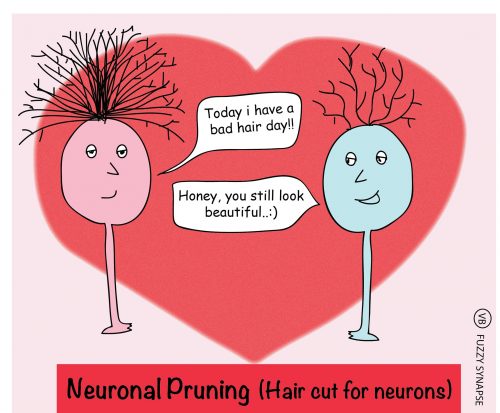
“The idea behind this illustration is to explain a various important process in our brains called ‘neuronal pruning’. This process helps in eliminating unwanted connections to increase the efficiency of needed neuronal transmissions.”
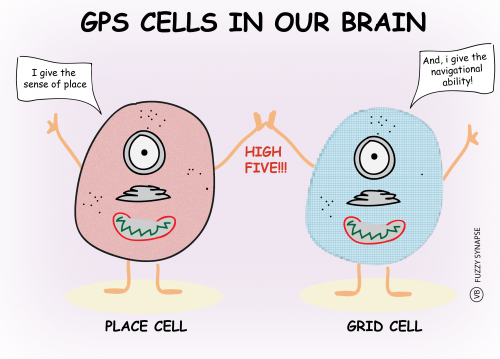
“This illustration highlights the finding of GPS cells in our brain, called ‘Place Cells’ and ‘Grid Cells’. These cells are responsible for sensing the place and helping in navigation, respectively. This discovery also earned the Nobel Prize in 2014.”
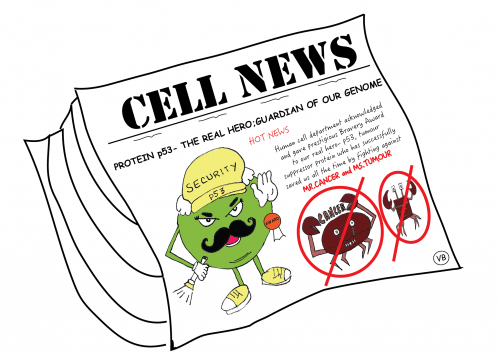
“This is dedicated to the crucial protein, p53, also called the ‘guardian of our genome’ in our cells. This protein regulates cell cycle and hence functions as a tumour suppression in multicellular organisms.”
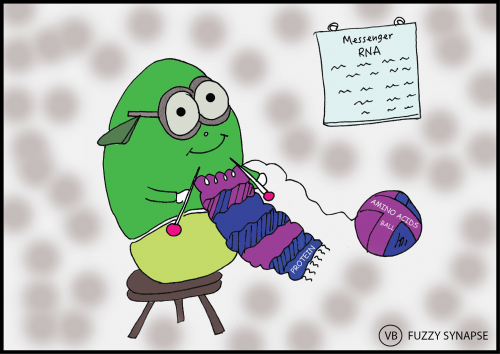
“This illustration explains the process of protein synthesis in our body. Ribosomes are the molecules which make proteins by reading a message on mRNA and using amino acids accordingly.”
Being educated on science topics, it only incited me to learn more about science, and Vinita agrees, “Science is not just a subject limited to textbooks, it’s a field full of curiosity and questions/answers. We ask questions to understand our surroundings and science answers those questions with experimental proofs.”
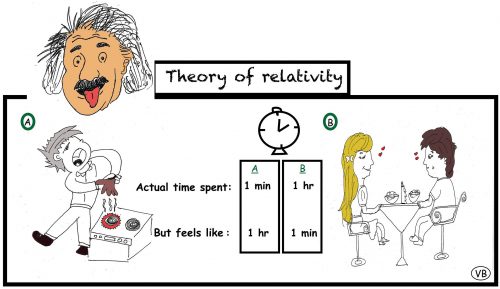
Her work addresses subjects such as global warming and genetics. One of her first illustrations, about Einstein’s theory of relativity, compares how we temporally interpret an unpleasant experience.
When asked where she sees this venture of Fuzzy Synapses in the future, she says, “I hope to make ‘Fuzzy Synapse’ a platform where everyone can easily connect to science. Rather than finding science topics out of subject, they can understand and learn various topics in fun and easy ways. I want to see it emerging as a common ground for all the artists who share the same idea of connecting science and the world with their art.”
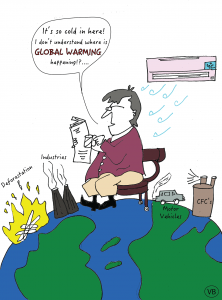
While running this impressive platform alongside her research, she also runs various exciting collaborations with groups like Career Support Group (PhD CSG) for STEM PhDs (A US Non-Profit 501 organisation), Stanford Medicine SCOPE blog, Taste of science team (Scientists Inc project, A US Non-Profit organisation) and collaborates with other talented bloggers.
Expressing science through art and connecting the two fields, Dr Vinita Bharat is surely inciting curiosity and working towards changing the perception of the two unique fields.
(Edited by Shruti Singhal)
Hey, you may also like: With Art and Science, Two Women Are Reviving Uttarakhand’s Nutritional Delicacies
Like this story? Or have something to share?
Write to us: [email protected]
Connect with us on Facebook and Twitter.
NEW: Click here to get positive news on WhatsApp!

Similar Story

Kyani to Nirula’s: Artist Takes India Down Memory Lane with Sketches of Iconic Eateries
Aditya Raj from Jaipur visited an exhibition during his law school days and decided he would be an artist. Here’s his visual representation of a nostalgia trip with pictures of the most iconic eateries in India.
Read more >
If you found our stories insightful, informative, or even just enjoyable, we invite you to consider making a voluntary payment to support the work we do at The Better India. Your contribution helps us continue producing quality content that educates, inspires, and drives positive change.
Choose one of the payment options below for your contribution-
By paying for the stories you value, you directly contribute to sustaining our efforts focused on making a difference in the world. Together, let's ensure that impactful stories continue to be told and shared, enriching lives and communities alike.
Thank you for your support. Here are some frequently asked questions you might find helpful to know why you are contributing?


This story made me
-
97
-
121
-
89
-
167












